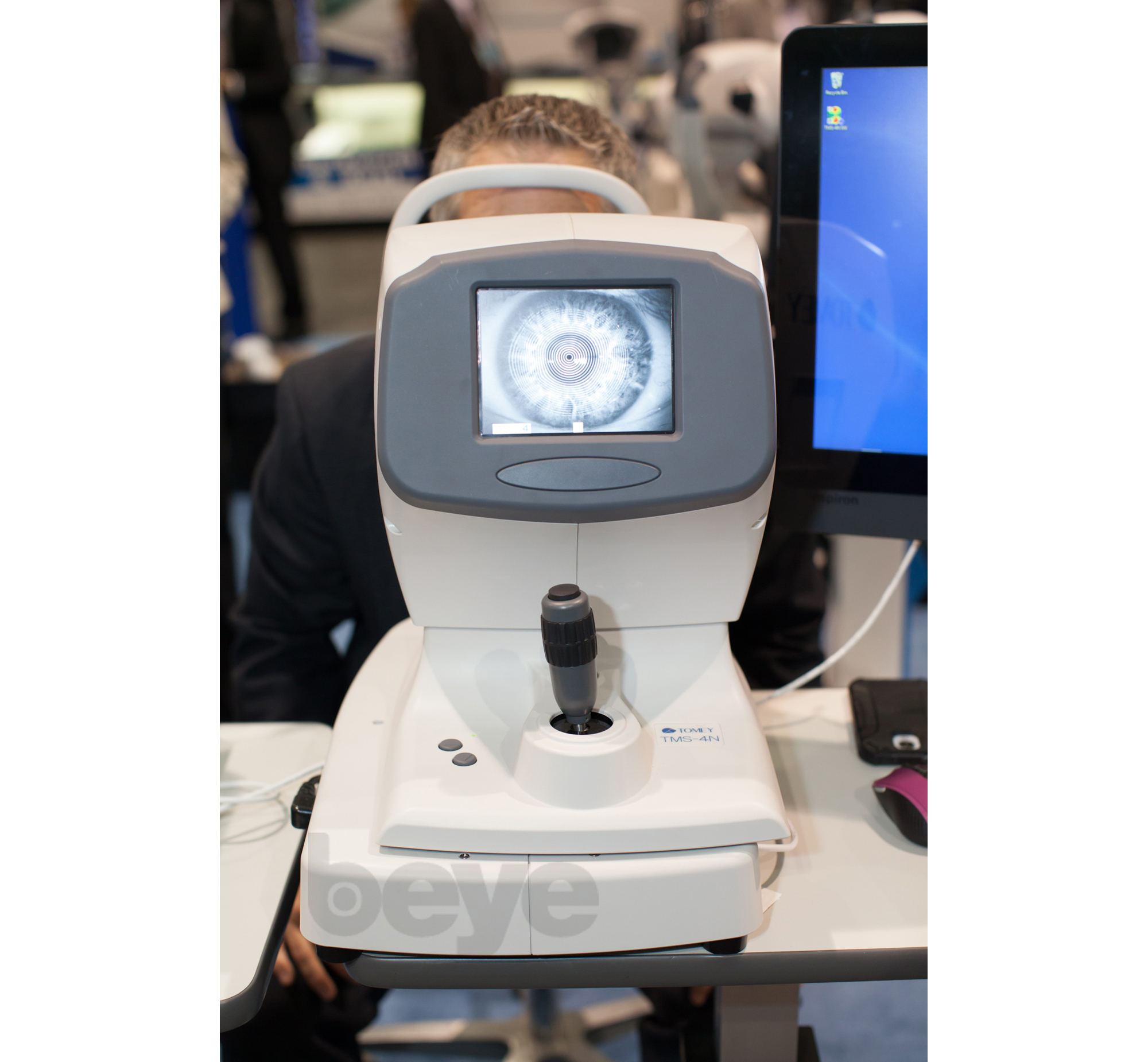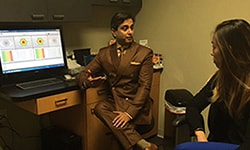Editorially Independent Content
As the former Director of Cornea and Contact Lens Research at Pennsylvania College of Optometry (PCO), I was first introduced to the original TMS-1 (TOMEY USA) over 20 years ago and then worked with the TMS-2 (TOMEY USA). Most recently I was involved in the software development for the contact lens design of the newest iteration, the TMS-4 System (TOMEY USA). It has essentially replaced keratometry in our practice and we now have the TMS-4 in both offices.
How it Works
The TMS-4 system is corneal topographer that provides basic keratometric readings such as cornea dimensions and parameters, but more importantly gives me a differential on anomalous corneas with small irregularities to assess the visual function of the patient. It uses a placido cone system, rather than a placido disc, which provides a very unique capture system for data assessment which I find offers much more information than other types of systems on the market.
The TOMEY system has two cones. The smaller 25-ring cone design eliminates shadow from the nose and brow. It captures 6,400 data points and focuses on the central portion of the cornea within about 8.8 millimeters. The 31-ring cone has a little cut-out which allows the device to get closer to the globe of the eye. The larger cone captures much more information, 7,936 data points, and allows you to devise the contact lens design and comanage refractive surgery patients.
While the TMS-4 provides a lot of information, the data is easy to understand unlike some other systems. The statistical indices are straightforward and TMS-4 interface is intuitively designed. As you work through an analysis, if you are unsure what a particular index is, you can tap on it and the interface displays a definition right on the screen.
Advanced Software for Contact Lenses
Many years ago I assisted in the development and validation of the TMS contact lens design program. The goal was to develop unique software utilizing topography, not just for landscape mapping, but to design a precision shaped contact lens. The software integrates with standard nomograms from contact lens manufacturers and also allows users to enter custom nomograms based on preferred design type, lens diameter, or optic zone. When I look at the fluorescein pattern overlay, I can manipulate the shape to exactly what I want.
We conducted a very unique study many years ago with the TMS system which compared lens fitting methods1. We worked with Conforma, a contact lens manufacturer, to create lenses based on either K readings, topography or on-eye fits. Experts around the country then compared each fit in video recordings and found that the topography data from the TMS alone was really good at designing contact lenses. Having a very good image of the cornea, the fluorescein overlay, and the ability to manipulate the parameters of every section of the contact lens on the eye without ever putting a lens on the eye gave us a wonderful prediction of the actual fit. They were as good or better than my own diagnostic fit which I would determine by assessing a lens directly on the eye.
Uncovering a Diagnosis
In addition to the contact lens software, the TMS-4 provides valuable topographic information. Some colleagues may think that topography is only used in optometric practices to analyze abnormal corneas but that is absolutely not true. We've always been taught that there is a reason if patient can't achieve 20/20 best corrected visual acuity. It's either a tear film problem or simply an irregularity with the cornea that you'll see on the topographer. I can tell you from experience that there are a lot more irregular corneas than normal corneas. For example, an ophthalmologist once referred a family member who had 20/15 vision but complained that she “could not see.” We simply did a topography on the TMS-4 and found that she had a slight irregular corneal decentration which gave her aberrations. We were able to address her visual function by fitting her with a Plano gas-permeable lens.
Keratometry is still important for tear assessment but what's very nice about the TMS-4 system is the TSAS system, which analyzes tear stability. I always teach my students and staff to look at the tear film first. Really, in any topography system, you're taking a picture of the tear film on the cornea, you are not taking a picture of just the cornea. If that tear film is irregular, now you have an assessment. Many of the systems available do not evaluate tear film so this is a valuable feature of the TMS-4 in the management of dry eye.
From dry eye to visual function assessment, the TMS-4 has so many different applications to help manage patients. It's just a terrific system.
1 Comparison of Topographically Based Software with Diagnostic Trial Lenses and Empirical Methods for Fitting RGP Contact Lenses”. Daniels K., Silbert, JA. Jedlicka, J. Poster American Academy of Optometry 98. San Francisco





